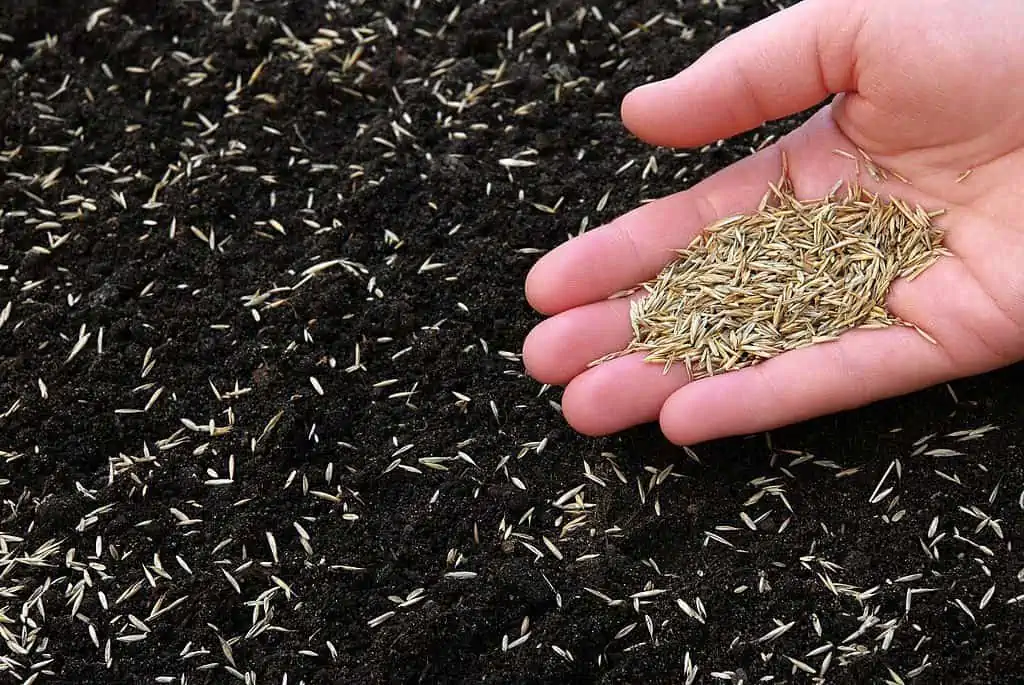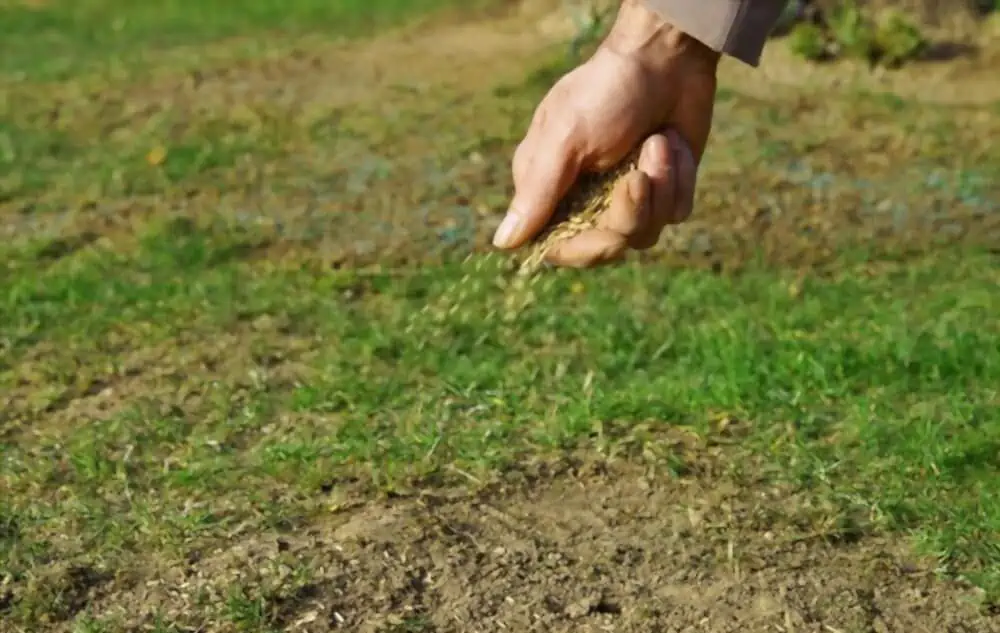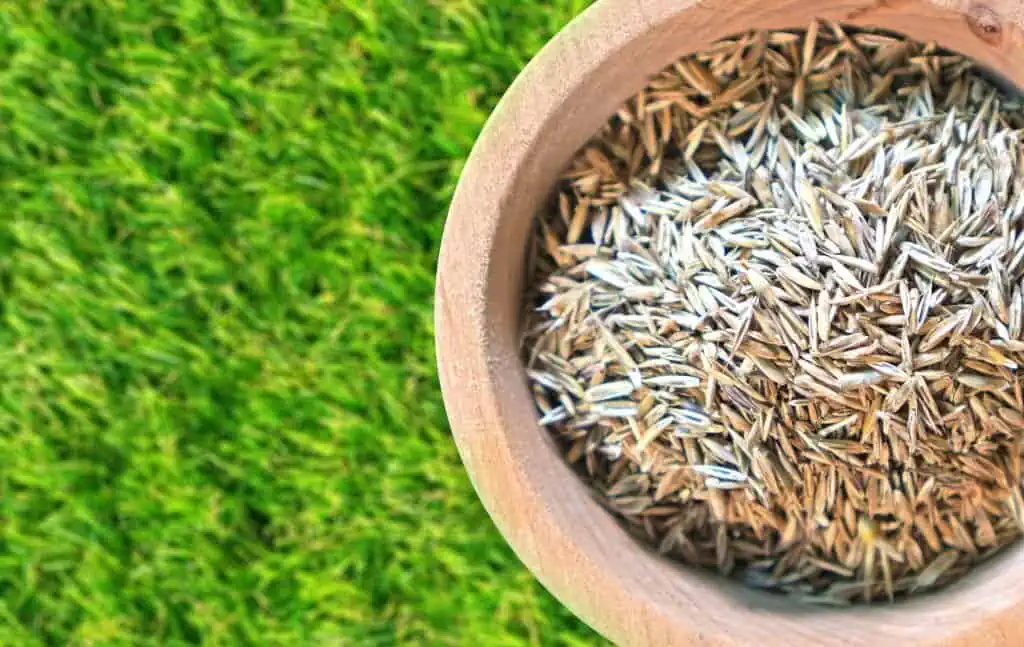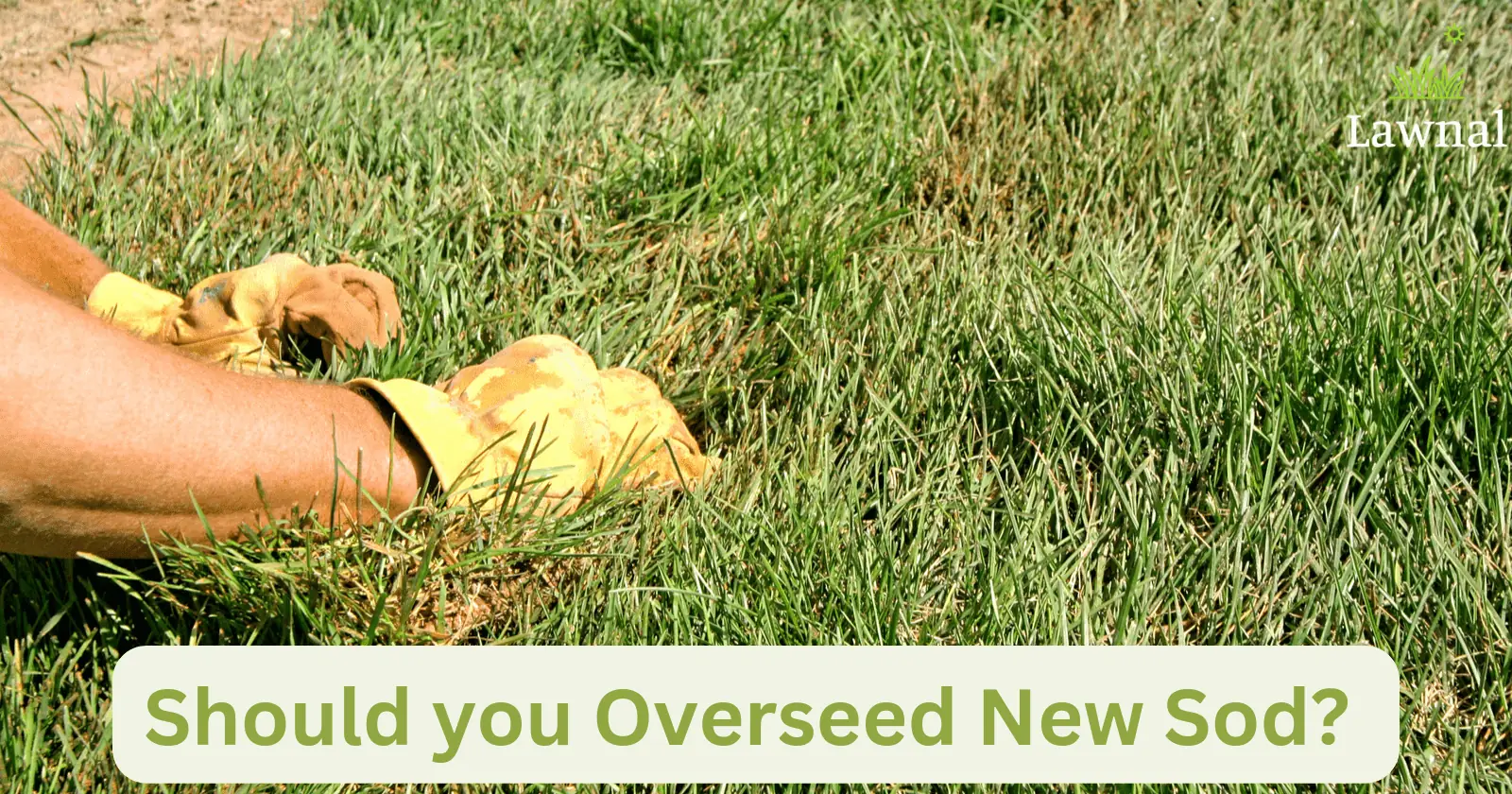Many homeowners may ask if it’s feasible to seed a lawn with too much grass seed. After all, more seeds result in a thicker, lush lawn, right? Sadly, this is only sometimes the case. An uneven lawn, poor seed germination, greater resource competition, and other issues might result from overseeding a lawn.
Overseeding is laying down more seed than the amount of seed you need to create strong grass. This can occur when householders apply seed to locations with a healthy stand of grass or when they spread seed with an excessive amount per square foot.
In such a situation, the surplus seed may compete with the existing grass for nutrients, water, and light, resulting in poor Germination and uneven growth.
This post will examine the potential drawbacks of overseeding and how to seed a lawn for the best outcomes.
Why is Overseeding Important?
Overseeding is crucial since it offers a quick solution to fill bare grass areas. Numerous things, including the weather, stray toys, local dogs, etc., could have left these stains.

Increased grass density can also be achieved by overseeding your lawn. This can stop weeds from establishing roots. It can also make your grass look more colorful and homogeneous.
Overseeding help with the following:
- It promotes healthy growth
- Restore that vibrant green color and increase tolerance to drought and disease.
- Protect from insects and pests.
- Rejuvenate the grass in locations with lots of shade or traffic.
- Reduce the quantity of water, fertilizer, and pesticides required to maintain a healthy lawn.
In general, overseeding an existing lawn is essential for preserving healthy grass. Also, it’s more straightforward than taking out your grass and starting over, but it’s also straightforward to overseed wrongly.
Can you Put down too much grass seed?
Let’s examine the drawbacks of planting too much seed.
1. Poor Germination of Seeds
One of the significant issues with overseeding is that more seeds might result in better Germination. A seed’s Germination may need to be improved by competition for resources like water and light when too many are in one place. Also, inadequate soil-seed contact brought on by the surplus seed can further prevent Germination.
2. An Increase in Resource Competition
The other seed might result in greater competition for resources like water, light, and nutrients, which is another issue with overseeding. Too many seeds in one place may fight with one another for these nutrients, resulting in uneven growth and poor grass quality.
3. An Uneven Lawn
Overseeding can also result in an Uneven Lawn, where some portions of the grass grow thicker than others. Because the surplus seed might compete with the existing grass for resources and cause further thinning, this can be particularly problematic in locations where the grass is already sparse.
4. Disease and Pest Problems
Additionally, disease and pest problems may result from overseeding. Overcrowding of plants can result in a humid environment that is ideal for the development of fungal diseases. This could result in higher disease risk, particularly in places with ill-drained soil or warm, muggy climates.
5. Planting Without Consideration for the Right Timing
It would be best not to be tempted to plant seed when it’s not the right time because timing significantly influences outcomes. Seasonal cycles that determine the grass varieties prevalent in a given region influence how quickly grass grows. You considerably increase your chances of success by planning your seed initiatives to match with growing cycles.
The optimum time to plant grass seed across most nations is fall. The conditions are ideal for quick Germination and establishment at this time of year when cool-season grasses like Kentucky bluegrass and tall fescues reach their peak development.
6. Improper Use of Lime
Although many homeowners believe lime is only sometimes necessary for maintaining grass, applications of lime help lawns that need their pH raised because regular lawn care can naturally lead soil pH to decline over time. However, the pH of the soil may already be high in some situations. Lime can be harmful if used excessively or applied without a need.
Lime restores proper pH balance, increases nutrient availability, and helps keep lawns green when soil test results reveal your lawn’s soil pH is below the levels needed for optimal grass health.
How to Overseed Your Lawn

To reduce the issue of over-seeding, you should seed your grass appropriately. As a preliminary step, consider the following advice:
1. Determine the Appropriate Seed Quantity
Choosing the appropriate quantity of seed to use is the first step in adequately seeding a lawn. The kind of grass you’re planting, the state of your soil, and the local climate will all impact this. Use 4 to 6 pounds of seed per 1,000 square feet of the lawn as a general guideline.
2. Soil Preparation
It’s necessary to get the soil ready before you start sowing. This entails clearing the trash area, such as twigs and leaves, and then tilling the soil to a depth of at least 4 inches. Good seed-to-soil contact, essential for good Germination, will be helped by doing this.
You can choose a seed that complements the cool-season species on your lawn, but you can also introduce a new type to improve your lawn’s resistance to disease and drought.
Warm-season lawns can only be overseeded with perennial ryegrass since it germinates quickly and has challenging competition in the spring when the warm-season grass starts to grow again. Select a grass seed with a high percentage of pure, viable seed, a high rate of Germination, and no weeds or filler.
3. Apply the Seed Uniformly
Applying the seed is necessary after the soil has been prepared. A broadcast or drop spreader is essential to distribute the seed evenly across the lawn. Doing so will help guarantee that the seed is.
4. Rake After Overseeding
The germination process depends on good soil and seed contact. Therefore, you should softly rake the lawn after overseeding. It’s not compulsory, but you need to add a topsoil layer 1/8 inch thick and firm it with a roller.
5. Water Properly
After planting the seeds, water the soil briefly and frequently daily to maintain a light moisture level; the seeds may not germinate if the soil is too dry. They will be washed away if the soil is excessively saturated. Therefore, once you see the growing grass, you can water it thoroughly and occasionally.
6. No Weed Killers or Herbicides
Herbicides are the number one enemy of freshly sown lawns. Verify that no chemical weed control or weed prevention has been applied because those substances will inhibit or prevent Germination. Herbicides will eradicate the fresh grass when applied to very new lawns.
7. Maintain Your Lawn
You should feed your grass with a typical fertilizer three times a year once the seed has germinated and begun to grow. Maintain a routine for watering your natural grass. Remember that your lawn’s overseeded areas may only be partially established for three years. So, exercise patience and take careful care of your newfound bounty.
DIY vs. Professional Overseeding Services
There are certain advantages of using a professional lawn service. You can check to see if your lawn needs overseeding with the assistance of a professional lawn care provider. You can waste your time and money on overseeding because other issues can bring on uneven, unruly lawns.
A professional lawn care provider can assess your lawn care and develop a more comprehensive plan to make it green and healthy. Additionally, professional lawn care services use more sophisticated equipment than most amateurs.
De-thatchers, power rakes, and slit seeders make the job easier, faster, and more precise than using a rake and a seed spreader. It is usually worth the investment to ensure the job is done correctly for the first time.
Whatever strategy you choose, Overseeding is a quick and easy method to boost your lawn and keep it looking beautiful for years to come.
The Bottom Line
Overseeding lawn grass is relatively easy, especially if you adhere to the abovementioned procedures and use the tools. Determine the ideal time for success based on your grass type and growing zone (cool or warm season), the appropriate amount of grass seed, and the proper ways to maintain your lawn.
In addition, mow and rake the area to prepare it for lawn seeding. Use a thatch rake to remove thick thatch layers from the grass or aerate it before seeding. The next step is to adjust the soil to ensure your grass seed will take root and develop to produce a complete, lush lawn.
Now that you know this, you can start preparing to overseed to enjoy a lush lawn.






